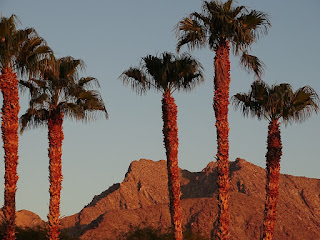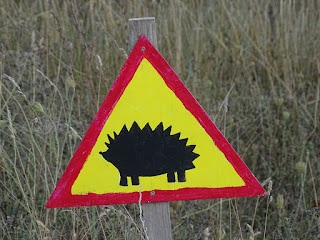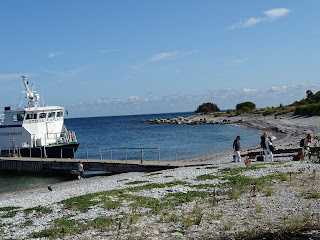Camping in the desert! What a grand experience! The night skies are full of stars, the air is quiet except for the owls and coyotes and the mornings are magnificent. Plus, the days are filled with a chance to see the endangered, magnificent peninsular bighorn sheep.
One of my very favorite birds to find in the desert is the Cactus Wren, Camylorhychus brunneicapillus. During the breeding season, its unique voice fills the desert. This time of year it is a little harder to find but I found one in a fine spiny cactus.
Ocotillo
Costa's Hummingbird, Calypte costae
This time of year, the blooming flowers are few so the resident hummingbirds keep a sharp eye on any intruders to their "patch".
Loggerhead Shrike, Lanius ludovicianus
These mighty "butcher birds" have quite a reputation with impaling their prey on sharp places like cactus spines. I have yet to find their prey in this precarious position but one day, I might encounter it.
When night falls, it's time to pull out the blue lights to find the glowing scorpions. We found some as small as my baby fingernail but this one was over 2 inches long. Quite impressive!
Anza Borrego desert is close to the shrinking Salton Sea. It traditionally has been an important stop on the Pacific Flyway for migrating and wintering birds but it is currently challenged by increasing salinity and dropping water levels due to diversion. I fell in love with this place when we moved here but I discovered that locals have mixed opinions of this important place due to misinformation. Finding ways to mitigate its decline are a top priority that should continue despite the challenges.
On my way to the sea, I found that an Osprey had replaced the Great Blue Heron that perched on this sign last time I was here.
Burrowing Owls, Athena cunicularia
What a rewarding sight! Finding burrowing owls surviving due to interventions is a reassuring sign.
Here is a view of the beautiful Salton Sea that is shrinking day by day. I am not alone in hoping that this special desert sea will not disappear completely. When I wake up in the morning at the fire lookout tower on Tahquitz Peak in the San Jacinto Wilderness, I start my day scanning the horizon for this body of water that has provided life for thousands of birds during the winter.
The desert is known for being a quirky place. Next to the Salton Sea is quite a unique museum...the International Banana Museum. This was my first visit.
For a one dollar contribution, you can explore this record collection of banana regalia in one spot. Why the desert? I have no idea! But who cares, it brings a smile to your face, guaranteed! Enjoy!
For more information about the bighorn sheep, check out this video by Mark Jorgensen who has dedicated his life to protecting them. He also published a beautiful, informative book about them called
Desert Bighorn Sheep.
Jorgensen, M. [Anza Borrego Explained "We tell you where to go."]. (2019, August 31). The Importance of the Endangered Species Act [Video File]. Retrieved from https://www.youtube.com/watch?v=b-xBnxQav24&feature=youtu.be
Click on photos to enlarge.
Photos and content by Robin Roberts.























































